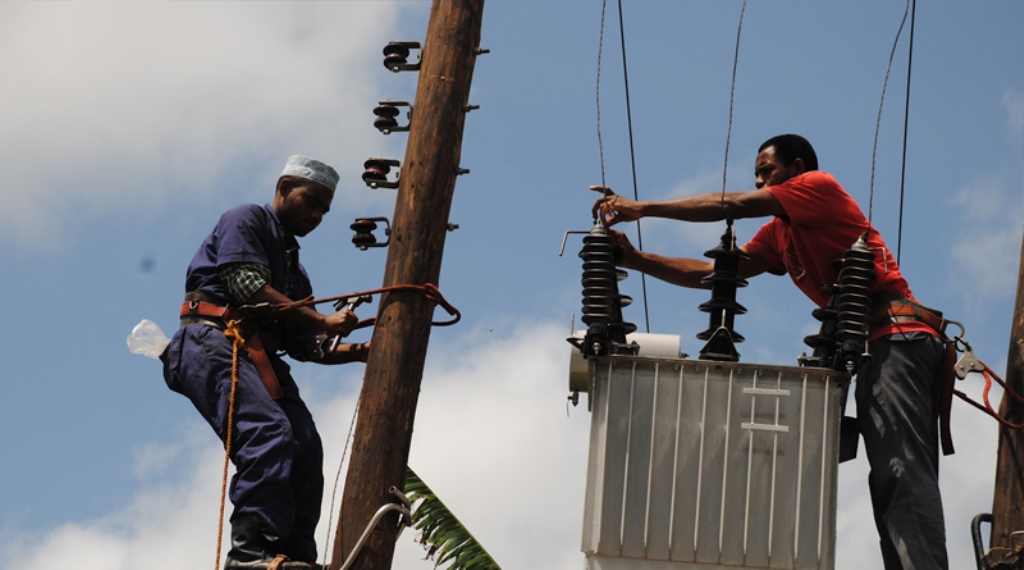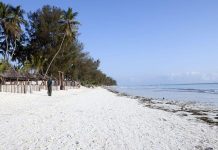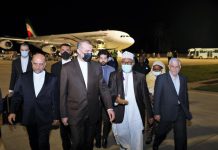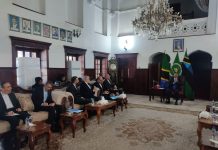AfricaPress-Tanzania: ONE of the unforgettable fruits of the union between Zanzibar and Tanganyika is that all the 388 Shehias (sub-wards at the community level) in the Isles have electricity generated in Tanzania Mainland and brought to Zanzibar through sea cables.
The final Shehia in the country to get electricity would be Kijibwe-Mtu, which was formed recently and work is already underway to connect the area to the national grid, says the ‘Zanzibar Electricity Corporation (ZECO) authorities.
“We are celebrating, although Covid-19 has locked us and prevented gathering. The Union has been good, we should get proud of it as we mark its 56th anniversary,” Mama Saada Ibrahim of Kisiwa-Panza small islands in South Pemba says.
Electrification of all Shehias of Unguja and Pemba in Zanzibar was one of the government’s biggest promises, particularly under President Dr Ali Mohamed Shein who is finalising his two terms of five-years, from 2010.
Dr Shein has repeatedly thanked everyone (development partners, the people for allowing infrastructure in their areas, ZECO for implementing the work, and the union government to allowing the connection), involved in the electrification project.
Most of the work was completed in the past five years under President Dr John Pombe Magufuli, and the final term of Dr Shein.
“They will be remembered as great leaders who played a big role in the development journey of Zanzibar,” Ms Ibrahim said.
Analysts said Zanzibar government need to be praised for the commitment of ensuring that all Shehias (or more than two thousand villages) are connected with electricity which has transformed the lives of the people in a very significant way.
Shehia is electrified when it has the basic power lines and many houses including hotels, private business centres and public places (including schools, administrative offices and health centres) have power.
However, as Tanzanians celebrate the union anniversary with the progress made, many people still need government support to get power connection.
Some houses are close to the power poles but are not connected due to high charges which reach 200,000/-depending of the distance to the pole/power cable.
“Having electricity in a house speeds up development. We use it in income generating activities, lighting our houses for children to study, and also source of energy for radio and television and radio, and recharging our mobile phones, but we are unable to get connected because of the power connection fee,” entrepreneur Mr Haji Hassan said.
People living on smaller Islands of Makoongwe, Fundo, Kojani, Tumbatu and Kisiwa-panza among others are now relieved of smoky wood and noisy generators in few houses, after the islets were connected to the National Grid.
“We were tired of the smoke from burning wood. The few people who can afford generators were also tired of noise. Students could not study at night due to lack of electricity.
Power from the National grid will help us overcome these challenges,” Mr Hamad Omar Ali, resident of Kisiwa-panza said.
According to the ZECO General Manager, Mr Hassan Ali Mbarouk, his office funded the project to connect the smaller Islands.
It was implemented under the ‘Rural Electrification program’, with the objective of connecting all Shehias to the National Grid.
Zanzibar has managed to connect almost all the Shehias to the national grid.
A Shehia is a term used in Zanzibar meaning a sub-ward, the lowest administrative authority in the hierarchy of Regional Administration.
While a Ward is an administrative division of a city or borough that typically elects and is represented by a councillor or councillors.
Mr Mbarouk says Zanzibar has recorded admirable success in rural electrification by almost 100 percent of the target. Norway started funding rural electrification project in 1986, before pulling out and living it under ZECO.
The General Manager said other inhabited smaller Islands of Kojani in Pemba and Tumbatu in Unguja were the first to be connected to the National Grid, and more than 800 households and 400 households already having using the lights in Tumbatu and Kojani Islets respectively.
“Rural electrification has helped to connect many villages to ‘reliable’ power from the National Grid,” Mr Mbarouk said.
ZECO customers are now more than 140,000. Unguja is connected through Dar es salaam, while Pemba is connected through Tanga Region,”
The power through electric sea cable to Unguja is 100 megawatts (MW) with the consumption surpassing 60MW, while the cable to Pemba transports 20 megawatts, but the need so far is about 7MW, he said.
Mr Mbarouk said that his company is determined to make sure that people in all areas of Zanzibar have easy access to electricity from the national grid, which is more reliable compared with power from other sources.
However, he said lack of special fund for the rural electrification programme had delayed the project, “I wish we had funds like that for the REA (Rural Energy Agency) in Tanzania Mainland, it would have been good.”
He said admirable progress in connecting Zanzibar to national grid, many households in rural areas are still unable to meet the costs of connecting to power to their individual houses.
Juma Omar, a student in Tumbatu Island says, “We were eager to have electricity in our house so that we can study and watch television. Father promised to buy a television once we have power; He has already fulfilled the promise.”
When Tumbatu Small Island was connected to the national grid residents including children there were giving their views about availability of power, saying they would use it for economical activities, in health facilities and studying.
Sustainable Development Goals (SDG)-2030 goal No.7 ‘Grow Affordable and Clean Energy’ pushes governments to improve electricity distribution in the country for social, economical, and political development.
Zanzibar relies heavily on electricity from the national Grid in the Tanzania mainland, as one of the major benefits of the union. However, the government is researching to find alternative source of electricity.
Researches have been going on to produce energy from solar, wind, sea waves, and wastes, as the Islands hope to have no problem of electricity in the near future should the planned ‘Oil and Gas’ exploration project be successful.
The World Banks says access to affordable, reliable and sustainable energy is vital to ending extreme poverty and promoting shared prosperity. It points out that energy like electricity can help improve the quality of life for millions around the world and key to promoting economic development.
On going changes in Zanzibar and also in Tanzania mainland, electrification remains one of the priorities for the governments and some development partners support connecting villages to the national grid.
The government also welcomes private power companies to produce and supply electricity to meet the demand.
As Zanzibar’s population continues to grow at the rate of 2.7 percent annually, the islands will require more megawatts of electricity in the near future.
ZECO’s Public Relations Officer, Mr Salum Abdalla says that rural electrification programme has proved successful in raising social, environmental and economic standards in rural areas.
People are being encouraged to use power and therefore minimising cutting down of trees for firewood or charcoal.
Rural electrification is the process of bringing electrical power to rural and remote areas.
In Sub-Saharan Africa less than 10 percent of the rural population has access to electricity and globally rural electrification progresses only slowly.
The International Energy Agency (IEA) estimates that, if current trends do not change, the number of people without electricity will rise from current 1.1 billion to 1.2 billion by the year 2030.
Due to high population growth, the number of people without electricity is expected to rise in Sub-Saharan Africa.
It is also estimated that around 2.9 billion people globally, mainly in developing countries rely on wood or other biomass for cooking and heating, resulting in indoor and outdoor air pollution attributable for 4.3 million deaths each year.
Electricity is considered an important factor to improve the lives of people in general and of the elderly and disabled in particular.
For the most part, the income of electrified households using network electricity is higher than that of households without electricity.
Many studies have shown that access to electricity helps create jobs in rural areas, as households take up new trades.
Most rural areas are also agriculture areas, where households need electricity for irrigation and crop production, and for small industrial commercial activities like bricks manufacturing and ice making.







